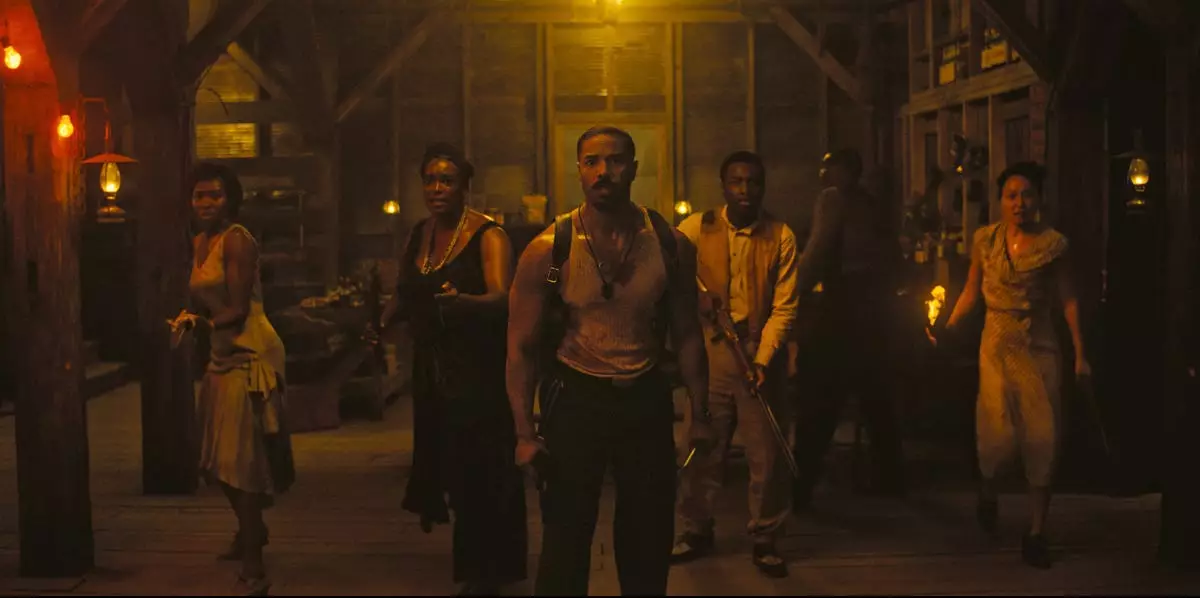Ryan Coogler, an acclaimed director renowned for his arresting storytelling and deep emotional resonance, takes a bold leap into the horror genre with his latest project, “Sinners.” Launching into the film industry’s spotlight following the massive success of “Black Panther” and “Creed,” Coogler’s latest offering combines the dark allure of a vampire thriller with the vibrant themes of Black Southern culture. What sets “Sinners” apart is its ability to transcend mere monster flicks and delve into the emotional intricacies of family ties and cultural heritage—a juxtaposition that elevates it from traditional horror narratives.
Set against the backdrop of 1930s Mississippi, “Sinners” stars the multifaceted Michael B. Jordan in a remarkable dual role as twin brothers Smoke and Stack. Their journey back to a haunting hometown is marked by the weight of unresolved pasts, not merely traumas of individual lives but broader societal implications of Black displacement and resilience. Coogler has imbued the film’s narrative with personal experiences, drawing inspiration from his late uncle, a foundational figure in his life. This deep personal connection translates into a cinematic experience that pulses with authenticity and raw emotional power, setting the film apart in a genre often dominated by tropes.
A Cinematic Approach Rooted in Emotion
In a Western film industry where horror often skims the surface of psychological depth, Coogler strategically integrates emotional depth into his vampire thriller. Despite its chilling premise, “Sinners” allows humor, tenderness, and even moments of light, thereby creating a rich, multifaceted experience. Coogler’s artistic philosophy seems to resonate with the idea that authenticity breeds connection; he urges audiences to feel as much as they are entertained.
In his discussions with notable figures like LeBron James, Coogler emphasizes the importance of the film’s emotional core. The reverence for family narratives and Black Southern culture not only adds layers but also honors the rich tapestry of experiences that shape the characters’ realities. This directorial choice strengthens the viewer’s investment in the twins’ fight against their personal demons and the literal monsters that threaten their community.
From Technical Mastery to Theatrical Grandeur
Coogler’s commitment to immersive storytelling extends beyond narrative focus into the realm of technical achievement. “Sinners” employs groundbreaking visual techniques, utilizing formats such as Ultra Panavision 70 and IMAX 65mm. This intentional choice not only enhances the movie’s visual splendor but also constructs an engaging environment that feels as expansive as it is intimate. Coogler’s goal is clear: he aims to deliver a complete cinematic experience, offering audiences the sensation of having indulged in an artistic feast.
The visual and narrative ambition of “Sinners” seeks to redefine what audiences expect from a horror film. With Coogler directing, what could have been a straightforward genre piece instead unfolds as an ambitious exploration of cultural identity and familial bonds. In an industry often criticized for its lack of direction, “Sinners” stands as a testament to the power of storytelling that engages viewers at both intellectual and emotional levels.
The Fusion of Horror and History
While it boldly embraces the horror genre’s chilling elements, “Sinners” also functions as a cultural commentary, reflecting on Black displacement in America. The film addresses themes of identity, belonging, and survival while seamlessly weaving in folklore that resonates with ancestral wisdom. There’s a fundamental respect for history that informs every frame, much like Coogler’s previous works that explore the Black experience through distinct lenses.
This intersection of horror with historically charged themes forces audiences to confront uncomfortable truths regarding legacy and memory. By shedding light on the challenges faced by marginalized communities, Coogler paves the way for deeper conversations about cultural narratives, indicating a shift towards more meaningful representations in mainstream cinema.
Ryan Coogler’s “Sinners” is not merely a thriller about vampires; it is a poignant exploration of family, culture, and the ghosts of the past that haunt the present. It holds up a mirror to society—one that reflects both fear and strength, making it a pivotal moment in storytelling that challenges and expands the boundaries of horror cinema.

